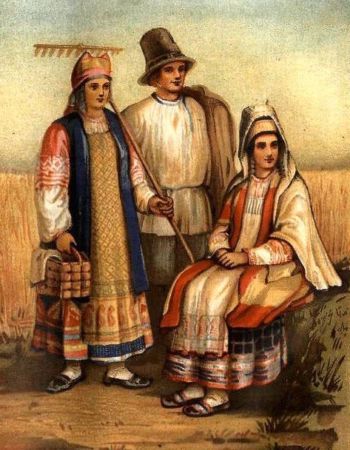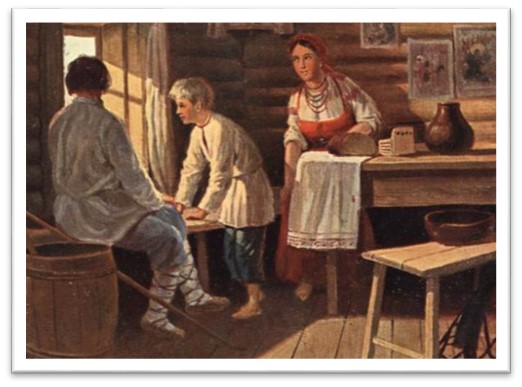
HISTORY OF THE FEST
The day of Peter and Paul is celebrated in memory of these apostles, disciples of Jesus Christ. According to legend, Peter and Paul were executed on the same day, so they are remembered together. This religious holiday, very revered by the Russian people, used to be widely celebrated on July 12 (June 29 according to the old style). On this day, the beginning of the season of haying was also due.
Haymaking lasted about twenty days, sometimes it might dragged on for a month, and the special environment and public mood were maintained throughout this time. At the end of haymaking, a feast was held for the entire community. The whole village came running for the holiday, including children: they sang, danced, watched the struggle of the volunteers who had volunteered, and exchanged jokes.
In the meadows they put up huts made of thin tez and unsuitable tattered clothes, several in a row. Near each hut a boiler was hung on the gantry. But in these temporary houses they only kept supplies or hid from the rain; slept under canvas canopies hanging in different places. Senior men and women sometimes went to the village, where small children remained under the care of the elderly and old women. Young people usually did not appear at home during the entire haying, including on Sundays.
“Haymaking time is revered for a festive event and is expected with impatience, especially by young people,” wrote an informant from the parish in the Geographical Society in 1866. The young managed to have fun, despite the hard and stressful timing. In the village, every step was visible, and the mowing conditions created relatively greater freedom.
The guys here dressed for haymaking dapper, flirted with the girls; on Sunday, when no one worked, they fished, played burners, rode boats, “played songs.” Men and women, and especially girls, “hid in the best attire” for haymaking, as “the most solemn holiday”, while the worst was put on for harvesting bread. The contemporary saw the reason for this difference in the fact that they gathered “in one camp” on haymaking, and each family worked separately in the harvest.
THE TRADITION OF PRESENTING KOSOVOROTKA ON SAINT PETER’S DAY
The peasantry had a beautiful and symbolic family tradition of parents
presenting a new Kosovorotka to their adult son at the beginning of haymaking. Traditionally, this used to happen on July 12 (June 29, old style) on the Day of the Apostles Peter and Paul. On this day, the Petrov Fasting was ending, in villages and towns their residents were preparing for haymaking. Haymaking usually lasted two to three weeks and was considered difficult but festive in the Russian countryside: both women and men wore holiday clothes for haying, after work round dances, games and dances were arranged.
Since ancient times in Russia on this day – July 12 – parents used to present their adult son a new Kosovorotka in which he went out into the world as a full-grown adult worker.



